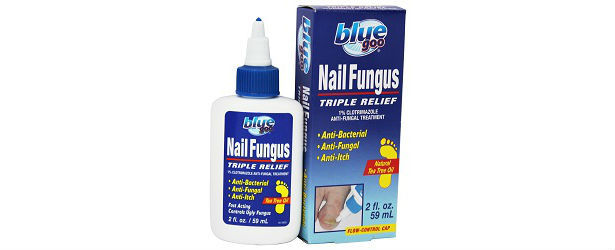
Our nails, both fingernails and toenails, are made up of keratin. The structure of them is similar to bone but they are very different in many ways. The nail works to protect the skin, and the appearance of nails can tell a lot about what is going on inside the human body.
Most, but not all, people are familiar with the concept of toenail fungus infections. There are a great many people who have some type of toenail fungal infection. This is because toes spend a lot of time in shoes, which are a dark, damp environment. They also come into contact with a large amount of items that carry and hold fungal spores.
 What is less commonly known is that fingernails can also become infected, just as toenails can. Typically, the first sign of infection is the nail changing color and becoming thicker, especially across the tip of the finger nail. Because hands are open and difficult to cover up, it can be very embarrassing to those who suffer from it. The first instinct is to cover up the discoloration with nail polish. However, this can cause the infection to get worse because it seals in humidity and prevents light from getting to the fungus to destroy it. Nail polish creates the ultimate breeding ground underneath the nail by providing the exact environment that a fungus needs to survive. The fungus will not go away on its own, and without treatment it will get worse and could spread to other nails and other people.
What is less commonly known is that fingernails can also become infected, just as toenails can. Typically, the first sign of infection is the nail changing color and becoming thicker, especially across the tip of the finger nail. Because hands are open and difficult to cover up, it can be very embarrassing to those who suffer from it. The first instinct is to cover up the discoloration with nail polish. However, this can cause the infection to get worse because it seals in humidity and prevents light from getting to the fungus to destroy it. Nail polish creates the ultimate breeding ground underneath the nail by providing the exact environment that a fungus needs to survive. The fungus will not go away on its own, and without treatment it will get worse and could spread to other nails and other people.
Treatments for Nail Fungus
There are a lot of available treatments to get rid of nail fungus. Oral anti-fungal prescription medications are one of the most effective methods. However, people try to avoid taking these because they can have some really harsh and dangerous side effects, including liver toxicity. There are also anti-fungal creams and solutions that are easy to purchase over the counter and some come at a very low price. Several of the options available to you are considered alternative remedies. These products use all-natural oils that contain anti-fungal properties on their own without relying on man-made chemicals.
The most popular anti-fungal treatment is a product called ClearFungus. This product combines two essential oils that are known to kill the fungus that affects nails while it moisturizes the surrounding skin and promotes healthy nail growth. To date, there are no side effects reported by consumers who have used this product.
Tips to Reduce Your Treatment Time
There are some important tips you should follow in order to reduce your treatment time and assist in the healing process.
- Maintain a regular schedule of applying anti-fungal solution to your nails.
- Maintain good hygiene. Sometimes, this may force you to change some of your regular habits.
- Wash your hands on a regular basis. Use soap every time you wash your hands. Scrub your nails and underneath your nails with a stiff brush to remove any dirt that gets under your nails or into the ridges of your nails.
- Do not use your nails to open, unscrew, or perform any other action that can be classified as using your nail as a tool. This can cause a split in your nail, allowing the fungal infection to bury itself deeper into your nail.
- Make sure any salon you go to for manicures or pedicures washes and sterilizes the equipment so that you do not risk getting a secondary fungal infection.
- Do not wear nail polish. While it may be embarrassing to have discolored nails, nail polish will hold moisture inside and can cause the fungus to grow more rapidly and spread to unaffected areas.

- Use and do not share your own nail maintenance tools. Never share clippers, files, cuticle sticks, or any other tool that is used on your nails.
- Wash your hands and feet thoroughly. Ensure that they are thoroughly dry.
- Pay careful attention to your nails. Catching a fungal infection early in its process makes treatment a lot easier and less time-consuming.
- Do not expose your fingernails to chemicals. If you have to work with chemicals, use gloves to protect yourself.
If you have tried the advice listed here and your fungal infection is not responding to treatment, see your doctor; there could be other underlying problems, or you may need to try a prescription anti-fungal medication for best results.
TOP 5
NAIL FUNGUSTreatments |
|||||
| Fungavir | ZetaClear | Nail-Rx | H-Nail Fungus | Dr. G’s | |
|---|---|---|---|---|---|
| 1 | 2 | 3 | 4 | 5 | |
| Price (1 bottle) Price (6 bottles) Best Value |
$49.95 $139.70 |
$49.95 $299.70 |
$19.95 $119.70 |
$69.95 $419.70 |
$14.99 $89.70 |
| Overall Rating | 99.40% | 81.60% | 79% | 72.90% | 69.10% |
| Effectiveness |





|





|





|





|





|
| Speed of Results | Extremely Fast | Good | Average | Average | Slow |
| Quality of Ingredients | Premium | Good | Good | Average | Unknown |
| Customer Satisfaction Evaluation | 99.30% | 82.50% | 78.90% | 76% | 69% |
| Safety Evalutation | Safe for Use | Safe for Use | Safe for Use | Safe for Use | Safe for Use |
| Customer Service Rating |





|





|





|





|





|
| Reorder Rate | Highest | Good | Good | Average | Average |
| Return Policy | Risk Free | 10% Restocking fee | 25% Admin Fee | Risk Free | No Guarantee |
| Success Rate | 99.20% | 80% | 76.50% | 72.30% | 69% |

 Subscribe Now
Subscribe Now











